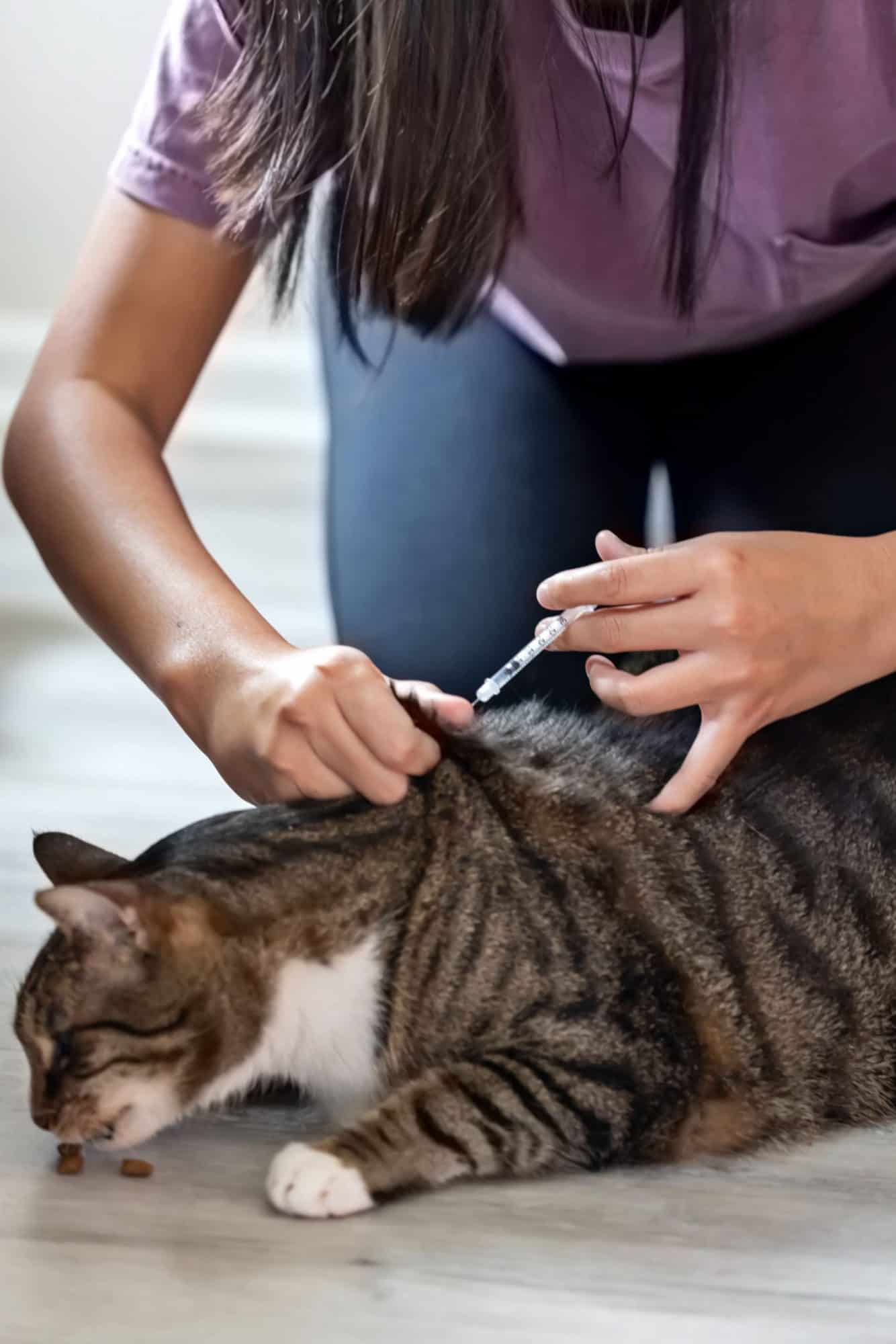November is National Pet Diabetes Month

One in four adult dogs and one in five adult cats have diabetes—a condition that occurs when your pet’s body can’t produce enough insulin to regulate blood sugar levels. It’s fatal if left untreated, and there’s no cure.
Fortunately, treatment options have significantly improved over the years, so it’s much easier to manage the condition now than just a couple of decades ago.
What Is Pet Diabetes?
Diabetes is one of the most common metabolic diseases seen in dogs and cats.
Pet diabetes is a multifactorial disease, meaning that a variety of factors cause it. Genetics are thought to play a role in the development of diabetes in pets, but obesity, diet, and stress can also contribute to its onset. Some studies have shown that certain pets and breeds are at higher risk for developing diabetes than others.
How Can I Tell If My Pet Is at Risk?
You should be aware of the dangers of weight loss in dogs. Diabetes in dogs can cause rapid weight loss, food aversion, and a general decline in health. In addition to unexplained weight loss, symptoms of diabetes in dogs include excessive water consumption, frequent urination, and increased hunger.
Obesity is a significant risk factor for diabetes in cats. Many cats become obese by eating too many calories and not getting enough exercise. The dangers of obesity in cats include high blood pressure and heart disease. Health risks for overweight cats also include an increased risk of developing cancers such as lymphoma, osteosarcoma, and thyroid cancer.
If you notice symptoms of diabetes in your pet, schedule an appointment with your veterinarian immediately.
What Are the Dangers of Pet Diabetes?
Pets with diabetes are at risk of severe complications, including:
Kidney disease and failure. High blood glucose levels can damage the kidneys over time—a condition called diabetic nephropathy. Pets with kidney disease may have trouble urinating, drink excessively, and develop high blood pressure. Symptoms of kidney disease include increased thirst and urination, vomiting, weight loss, and lethargy.
Diabetic retinopathy (eye disease). Diabetes can cause changes in the retina that can lead to blindness if left untreated. The signs of diabetic eye disease include blurry vision, redness or inflammation in the cornea (the clear part in front of the eye), and abnormal discharge from the eye.
Diabetic cataracts (cloudy lenses). Diabetic cataracts affect both eyes equally and may be present at an early age. The pupils are often primarily hidden when a cataract is present, so they appear cloudy instead of black. Cataracts interfere with vision but don’t cause pain or behavioral changes unless very large or growing rapidly.
How Do I Care for My Diabetic Pet?
Diabetes is a lifelong condition that requires careful, consistent management. The most important thing you can do for your pet is to maintain a healthy diet and regular exercise, along with monitoring their blood sugar levels.
While there’s no cure for diabetes, it can be managed. Treatment options include daily insulin injections or oral medications, routine monitoring of blood glucose levels, and regular visits to the vet. The severity of diabetes in pets varies greatly, and so do the treatment plans.
Proper nutrition for dogs with diabetes usually involves an easy-to-digest high-protein food to help them maintain a healthy weight. Cats are more prone to obesity than dogs, and high-quality nutrition and adequate activity are essential for their health.
How Is Pet Diabetes Diagnosed?
Diabetes can be managed effectively, especially when diagnosed early. The good news is that diabetes can be diagnosed with simple testing methods. Early treatment can prevent complications from developing later, so please don’t hesitate if you suspect something might be wrong with your pet.
If you have questions about pet diabetes or think your pet may have symptoms, please call us at (732) 387-7977. Mobile Vet MD is always here for you and your pet.
